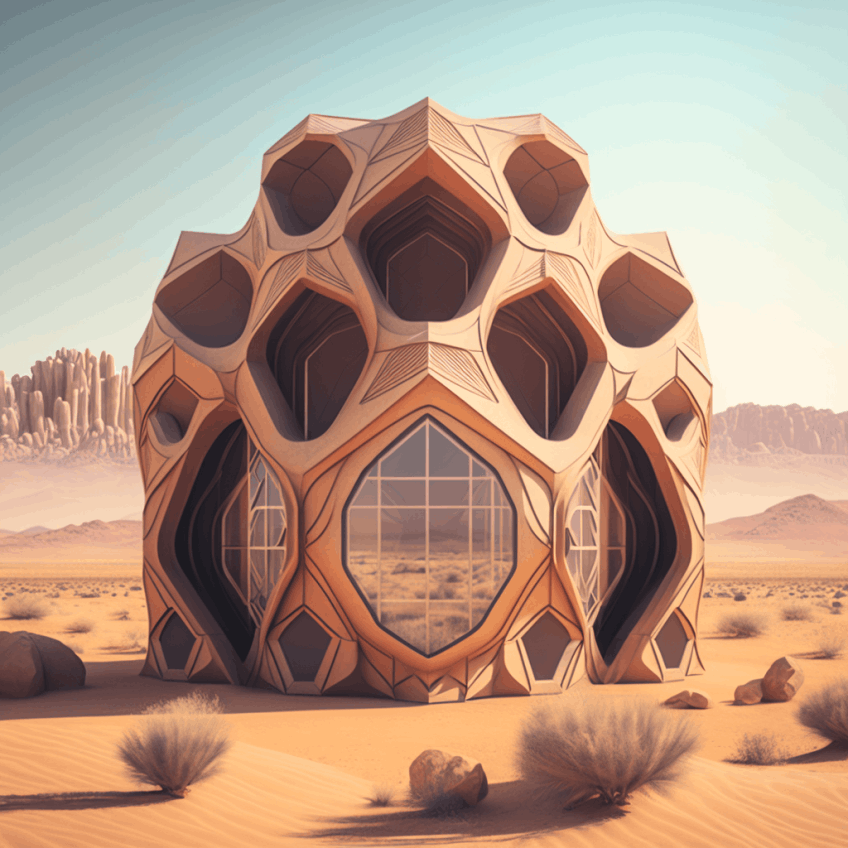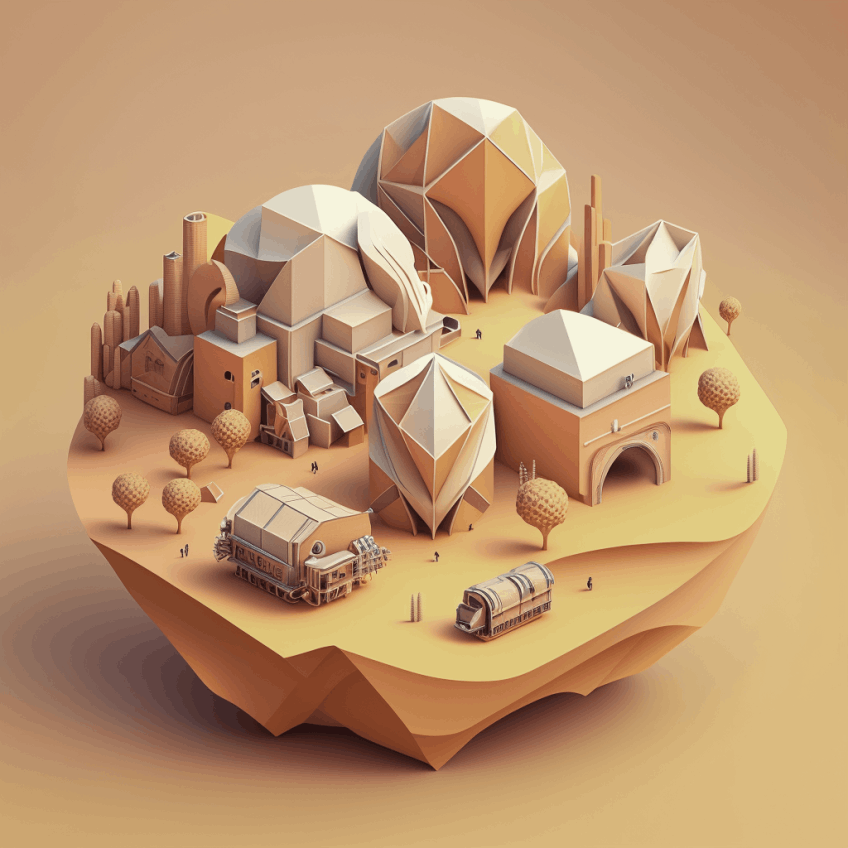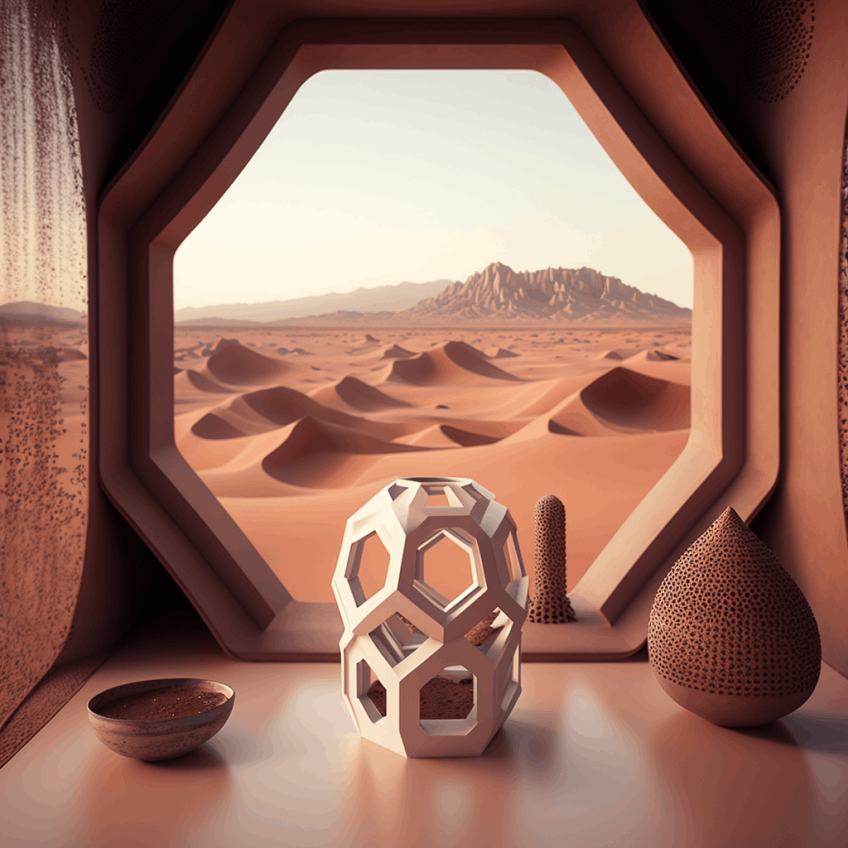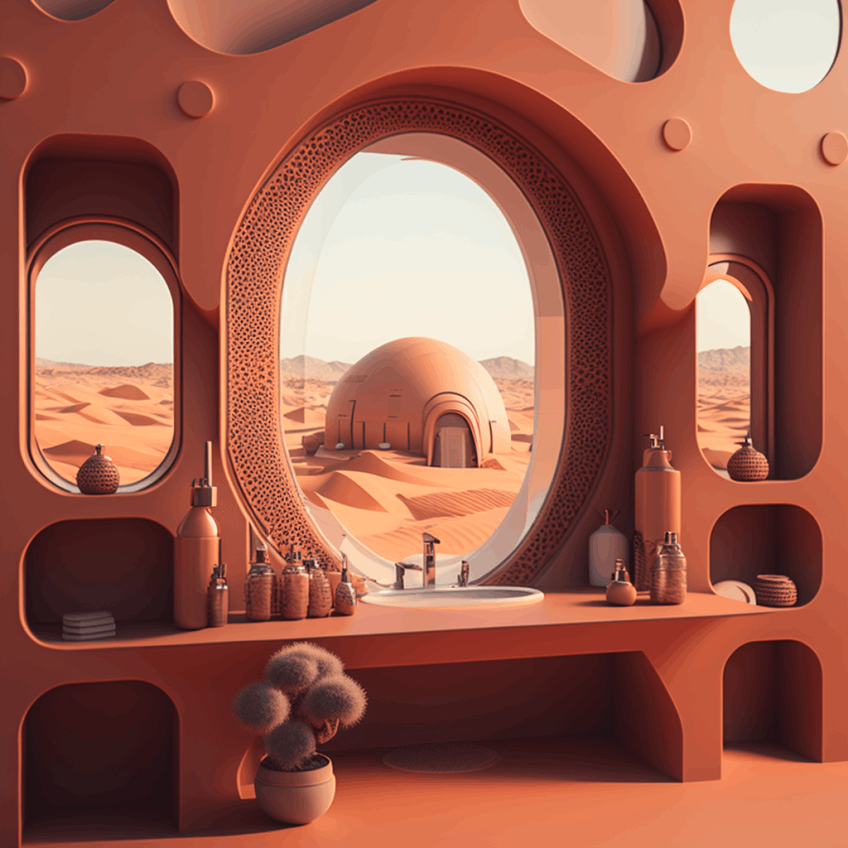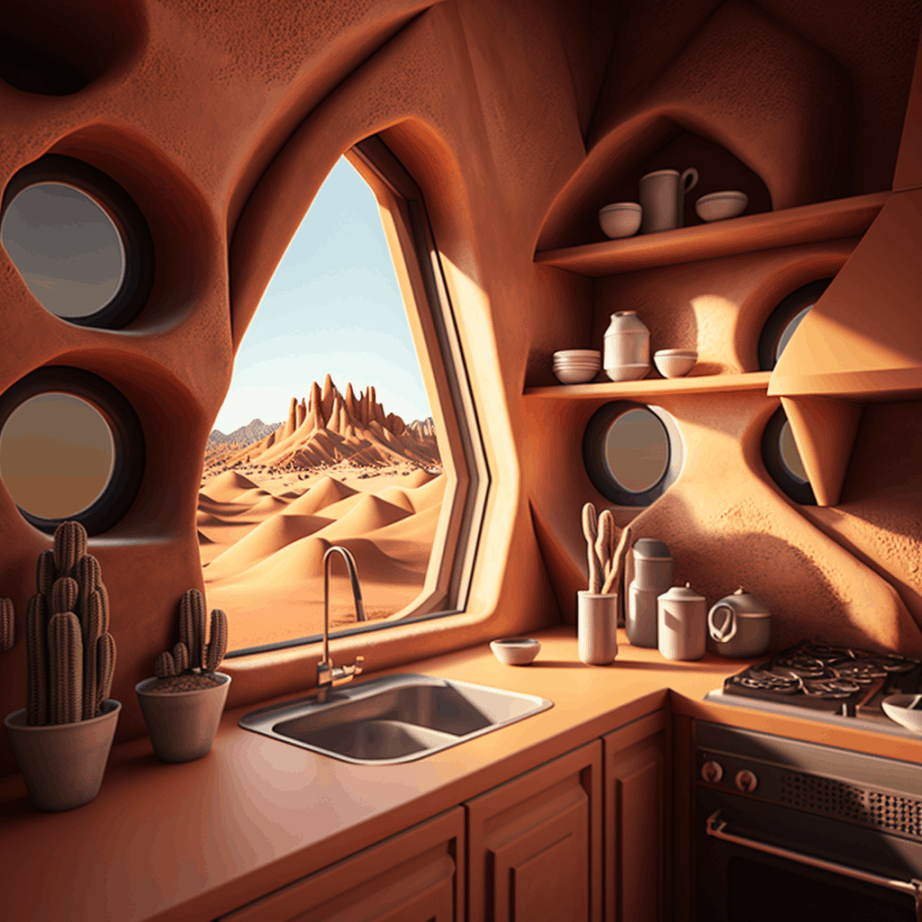Back
Windproof terracotta
Year: 2023
Category: Residential Architecture
Skills: Midjourney, Photoshop
The concept of a Terracotta 3D-printed building in the desert with a windproof facade involves constructing a building using terracotta material that has been 3D-printed, and incorporating a facade that is designed to protect the building from the harsh desert winds.
In a desert environment, strong winds can be a significant challenge for building design and construction. The wind can cause damage to buildings, increase the amount of dust and sand that enters the building, and make the indoor environment uncomfortable for occupants.
In a desert environment, strong winds can be a significant challenge for building design and construction. The wind can cause damage to buildings, increase the amount of dust and sand that enters the building, and make the indoor environment uncomfortable for occupants.
The windproof facade could be designed using a variety of techniques, such as using terracotta panels that are arranged in a way that minimizes wind resistance, or by incorporating wind deflectors that redirect the wind around the building. The facade could also include features such as louvers or shutters that can be adjusted to control the amount of wind that enters the building.
The use of terracotta material in the construction of the building could provide additional benefits, such as thermal insulation and fire resistance. Terracotta is a durable and sustainable material that can withstand extreme temperatures, making it an ideal material for desert construction.
Overall, a Terracotta 3D-printed building in the desert with a windproof facade could offer a sustainable and innovative solution to the challenges of building in extreme environments, while also providing a comfortable and safe indoor environment for occupants.
In addition to the windproof facade, the Terracotta 3D-printed building in the desert could incorporate other features to help regulate the indoor environment. For example, the building could be designed with natural ventilation systems that allow for the exchange of air without exposing the interior to excessive dust or sand. The use of shading devices, such as overhangs or awnings, could also help to reduce the amount of sunlight that enters the building, reducing heat gain and making the indoor environment more comfortable. The building could also be designed to take advantage of renewable energy sources, such as solar or wind power. Solar panels could be incorporated into the design of the building to provide a source of renewable energy for lighting and other electrical needs, while wind turbines could be used to generate electricity from the strong desert winds. The Terracotta 3D-printed building in the desert could have various applications, including housing, research facilities, or even tourist destinations. It could be designed to blend in with the natural surroundings, creating a harmonious relationship between the built environment and the desert landscape. Overall, the Terracotta 3D-printed building in the desert with a windproof facade represents a sustainable and innovative approach to building in extreme environments. By using 3D printing technology and natural materials, such as terracotta, it is possible to create structures that are both durable and aesthetically pleasing, while also providing a safe and comfortable indoor environment for occupants.
Andrew Pavlov
More by Andrew Pavlov
View profile